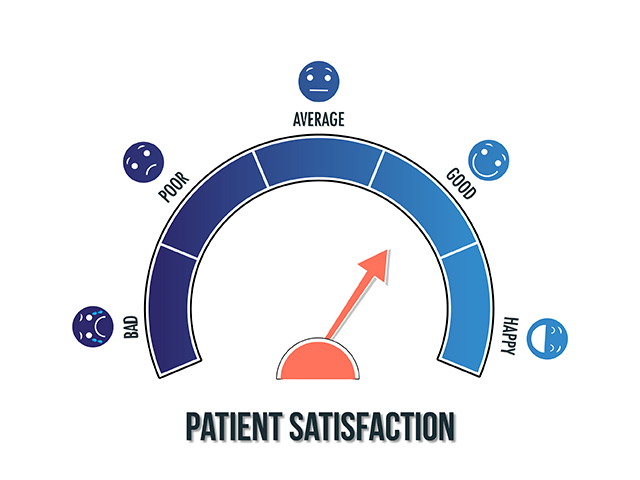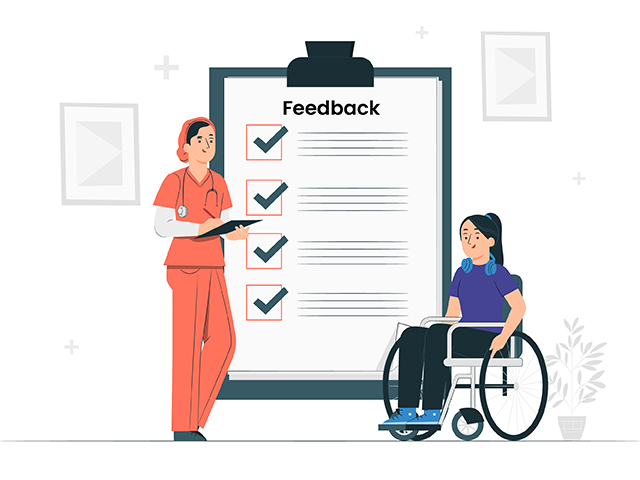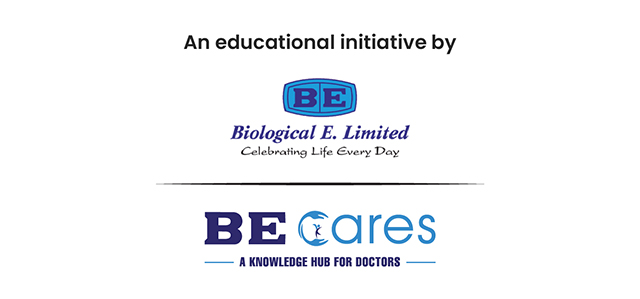It is rightly said that "Patients cannot measure the quality of clinical care, but they can measure the quality of experience!". Irrespective of the kind of medical practice you work in, improving patient experience in healthcare is critical1
Now let us try and understand the meaning of patient experience. Patient experience encompasses the range of interactions that patients have with the healthcare system, including their care from health plans and doctors, nurses, and staff in hospitals, physician practices, and other healthcare facilities.

Patient experience includes several aspects of healthcare delivery that are
of great importance to them when they seek and receive care, such as getting
timely appointments, easy access to information, and good communication with
healthcare providers.2
Are patient experience and patient satisfaction the same thing? Though the
terms are often used interchangeably, these two are entirely different
components. Satisfaction is whether a patient's expectations about a health
encounter were met. Simply put, two patients who have received the same care
may differ in their satisfaction levels due to different expectations.2

Why do patient satisfaction and patient experience matter in healthcare
practice? Improving patient satisfaction and experience should be prioritized
and set as primary goals by healthcare providers. Both are directly linked to
key success metrics for individual healthcare providers and their place of
practice.3
Some of the significant reasons for healthcare providers to prioritize and
take every measure to enhance patient experience and satisfaction include;
➢ Quick publicity: In today's world, word of mouth
plays an essential role in the success or failure of practice. A satisfied
patient will share their experience with four or five other people and strongly
recommend you to them. Online reviews are a rage now. Patients post their
positive or negative reviews, which are read and considered by potential
patients helping them get a glimpse of your practice.3
➢ Financial success: Considering the factor mentioned
earlier of quick publicity, it is a simple calculation of how your finances can
grow under positive publicity. Industry estimates have shown loss of a patient
due to dissatisfaction can result in substantial financial losses over the
lifetime of the practice.3
➢ Improved patient retention: Like any business, the
percentage of repeat patients is essential. A good number of repeat patients
who are happy to return to you is a sign of successful practice. Repeat
patients also ensure they refer other patients to you. Retaining existing
patients by delivering extraordinary care is one of the sure-shot ways to
reduce turnover, increase loyalty and extend lifetime value. Failing to provide
excellent service means losing a patient forever. Moreover, even if you are
losing only a single patient, that is one patient too many.3
➢ Attract more patients: Patient care is a
double-edged sword. Failing to meet one patient's expectations can result in
losing nine other patients. Regarding healthcare, people tend to trust family
and friends for good recommendations. By delivering on positive aspects,
medical practices can build their image among their existing patients and
attract new ones. Therefore word of mouth is a form of excellent marketing with
almost zero cost.3
➢ Improve clinical outcomes: Studies have shown that
patients who trust their healthcare providers have better clinical outcomes.
This means that the effectiveness of the treatment you provide also depends on
how much your patient trusts you. Therefore, meeting your patient's needs and
expectations will help raise their satisfaction levels and make your treatment
job easier.3
Now that we know how much patient experience and satisfaction can affect
your practice let us look at a few simple methods of improving patient
experience and satisfaction.

It is necessary to emphasize timelines and decrease waiting times. People do
not like waiting around when they try to contact you or the clinic over the
phone or in your waiting room. An efficient front office or reception staff
quick to answer phone calls or patient queries goes a long way. Similarly,
having an efficient queue system that reduces patient waiting time is
essential. Surveys have shown that doctors who earned five-star ratings made
their patients wait only 12 minutes compared to doctors with one-star ratings
who made their patients wait for more than 33 minutes per visit.1
Make it a habit to make every single of your patients feel welcomed. It is
understandable that often given the stress of practice and long-working hours
can leave you less cheerful. However, doing your job professionally and with a
smile is important. Taking time to get to know your patients, instead of
hurrying from one patient to the next, will give those being treated peace of
mind and make it more likely they will return for future appointments.1
Communication is a skill that needs to be focused upon by every single
healthcare practitioner. Patient outcomes depend on successful communication.
The physician who encourages open communication may obtain complete
information, enhance the prospect of a more accurate diagnosis, and facilitate
appropriate counseling, thus potentially improving adherence to treatment plans
that benefit long-term health. This, in turn, will ensure that the patient is
completely satisfied with your treatment.4
Make sure your support staff is focused on delivering service that is not
only high-quality but also delivers a positive patient experience. The first
step to patient-centric care is ensuring that your support staff has this
common goal in mind. It would help if you encouraged your team to suggest ideas
for improving patient satisfaction within your practice.3

A lot of patients are anxious about their visit to the healthcare
practitioner. Setting expectations will help relieve this anxiety by assisting
them to come prepared. Set clear expectations by giving them or sending them
forms, directions, instructions, etc. This, in turn, helps improve patient
satisfaction levels.3 Empower patients by embracing shared
decision-making. In today's world, where patients are getting details of
symptoms, signs, and treatment for their condition, doctors should be willing
to collaborate with their patients on choices, options, and treatments. It will
improve the patient experience in healthcare.1
Educate your patients by providing them with the necessary information to
achieve a positive patient experience. Patients feel empowered when they know
more about their diagnosis and treatment options. Studies have shown that
greater patient empowerment leads to improved patient adherence, improving
clinical outcomes.3
Have a sound follow-up system that helps patients connect with you between
appointments. Invest in technology and build systems that open the lines of
communication between the doctor and the patients. This helps foster long-term
relationships and makes scheduling appointments easier for the patients.3
Take feedback from patients and understand the scope for improvement. When
receiving positive feedback, leverage it. If your practice has worked hard to
earn positive words from patients, why not use these positive experiences to
reach more potential patients? Not capturing positive reviews, feedback, and
testimonials leaves a massive opportunity on the table.3

One can use measurement tools or surveys to understand the levels of patient
experience and satisfaction. With a view to improving patient experiences,
prompt feedback proves vital. Using multi-directional digital feedback
mechanisms whereby patients can provide their reactions or preferences at their
convenience maintains engagement.5
The survey can focus on asking patients to assess their experiences in areas
that research has shown patients value. These include ease of scheduling
appointments, availability of information, communication with clinicians,
clinic staff responsiveness, and team coordination. Supplemental questions can
be added to understand how the provider engages a patient as a whole person and
in decision-making, disease management, and health promotion. Measuring
patients' experiences is a critical step toward understanding and improving the
quality of care. This information can reveal system problems such as delay in
fixing appointments or lack of clarity in instructions etc. It can help
identify gaps in coordination and communication which can have significant
quality and efficiency implications. Apart from collecting the information,
another important step is using the information for improvement. That should be
the ultimate goal.6
With patient-centredness becoming entrenched in the quality landscape, it is
imperative to measure, report and leverage patient experience data for
improvement, gain momentum, and related focus in the healthcare practice.
References
1. Adapted from
https://qless.com/5-ways-to-improve-the-patient-experience-in-medical-practices/
2. Adapted from
https://www.ahrq.gov/cahps/about-cahps/patient-experience/index.html
3. Adapted from
https://www.practicebuilders.com/blog/patient-satisfaction-why-it-matters-and-how-to-improve-it/
4. Adapted from
https://www.acog.org/clinical/clinical-guidance/committee-opinion/articles/2014/02/effective-patient-physician-communication
5.
https://timesofindia.indiatimes.com/blogs/voices/advancing-patient-experiences-via-technology/
6. Katherine Browne, Deborah Roseman, Dale Shaller
and Susan Edgman-Levitan analysis & commentary Measuring Patient Experience
As A Strategy For Improving Primary care. Health Affairs, 29, no.5
(2010):921-925
